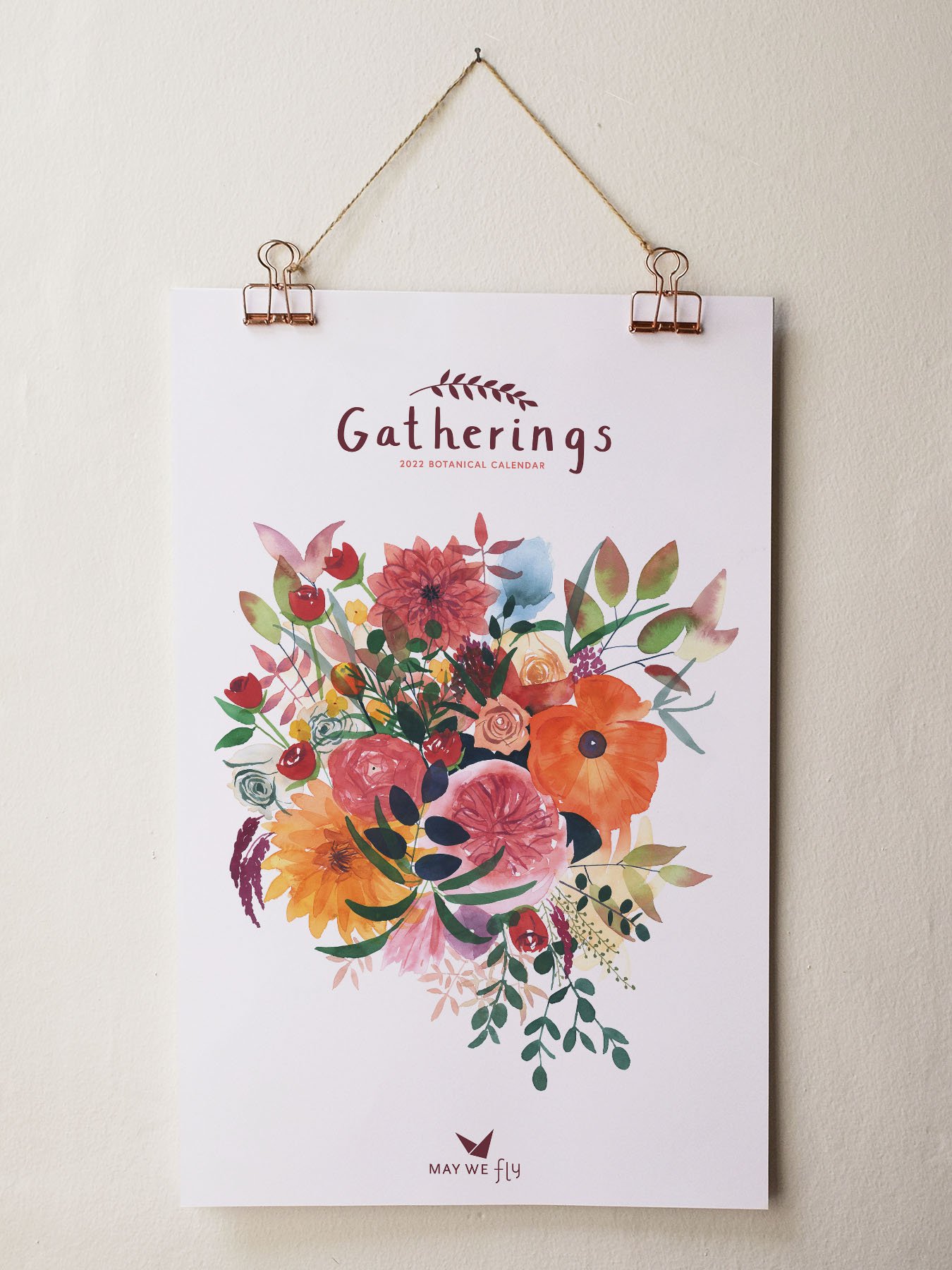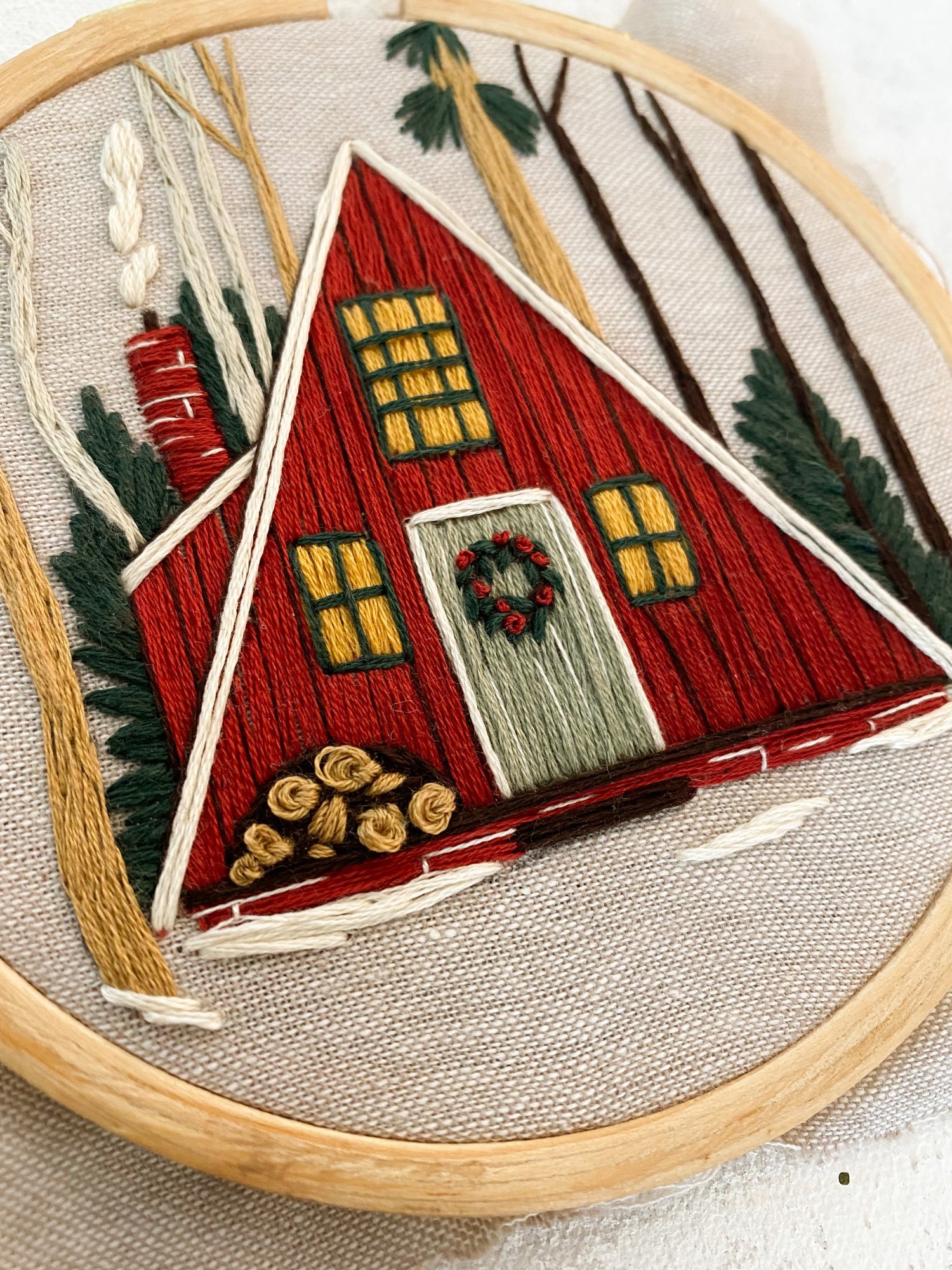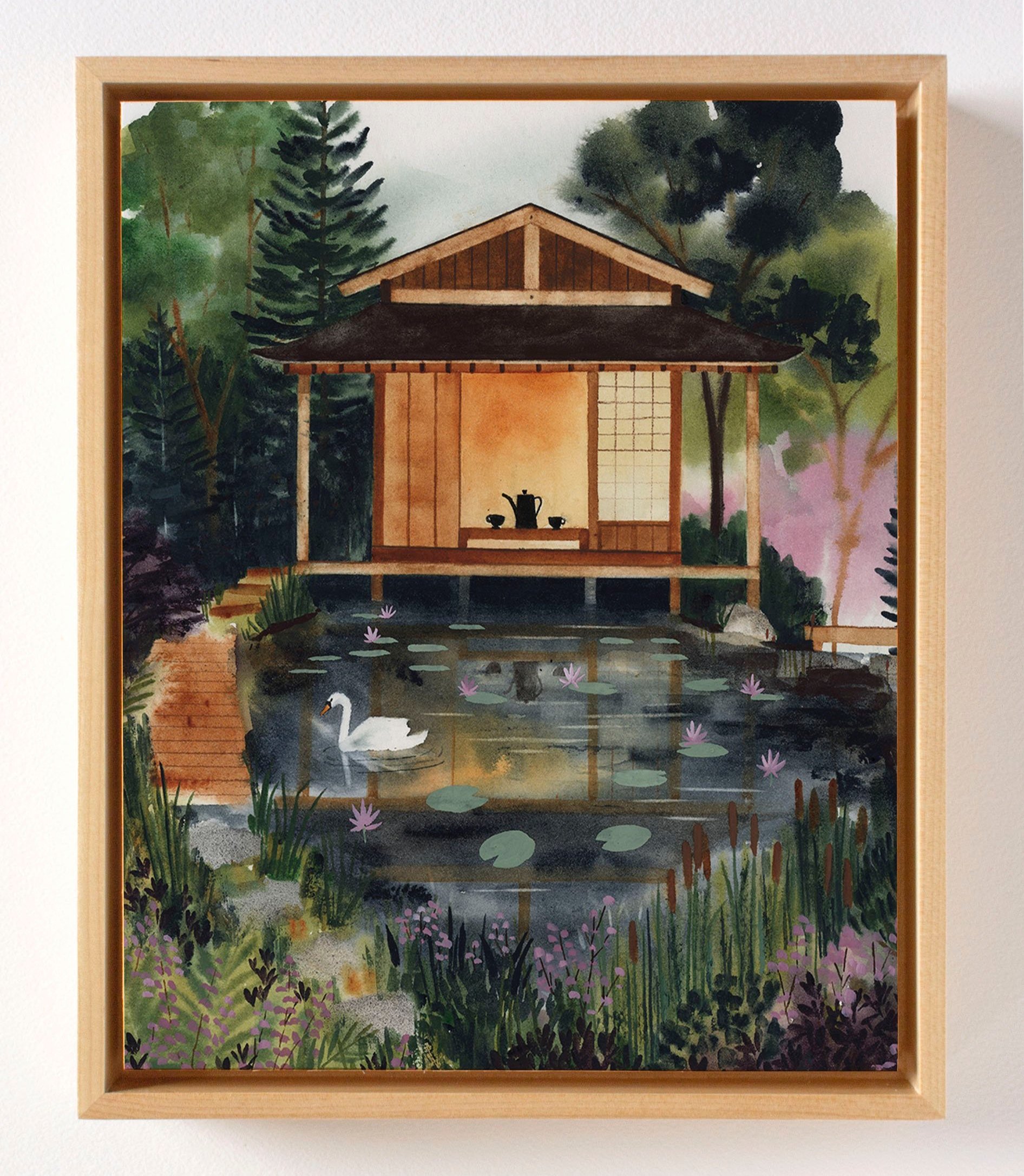How I Make Money as an Artist in 2022
If you are reading this, my guess is that you are a fellow artist, and if so, welcome! Isn’t this an interesting path we’ve found ourselves on? My goal with this post is to offer some insight into how I actually manage to earn a living from my artwork, along with some tips about what I’ve learned in the process of figuring it out. This is a long one, so grab a cozy drink and settle in!
Before I dive in to the nitty gritty, I think it’s important to share a bit of backstory. I started May We Fly in 2014 by opening a bank account with $250. At this stage, I was selling my work on Etsy and to my small but amazingly supportive community of friends and family. During the early years, I was working a variety of other jobs (teaching pottery, working part-time at an architecture firm, private lessons) to pay the bills while attempting to get my fledgling business to a point where it could do more than pay for my art supplies.
The first products I made for May We Fly!
What really kickstarted things was the opportunity to attend a popular craft show in our area (The Little Craft Show), in December of that first year. I managed to pull together a booth full of things (thanks to my wonderful friends who came over for a packaging party) and sold enough to cover the booth fee, start a website, and tuck a bit away for future inventory. I also collected some email addresses for my (non-existent) newsletter, which began with a list of 15 people.
Things grew slowly but surely in the following years. By 2016, I felt I was at a point where I needed to take the leap and go all in on the business in order for it to be able to grow, so I left my part-time architecture job in October of that year. This was terrifying. Thankfully, I still had my pottery teaching and private lesson students, so there was a bit of a safety net, but it was a very big and scary step.
My first calendar! I brought it back this year to celebrate 5 years of existence. :)
It turned out to be the right choice, because that year I launched what has now become my anchor product (more on that later): a wall calendar. I very hesitantly ordered 100 in the hopes that I would at least sell enough to cover the cost. To my amazement, I ended up selling 500 that season! I learned SO much through this process (like how offering free shipping on a $24 calendar meant that I basically made about $5, haha), but it really is the thing that helped kickstart the business in a big way.
So, fast forward about 5 years later, and here we are in 2022. Below is a list (in revenue order) of my current income streams. Interestingly, the income streams that are currently at the bottom were my highest earners when I first started. It’s fascinating how things evolve!
1 - Products
Products have been my focus from the very beginning, but it took quite a few years before they were my highest-earning category. There was LOTS of trial and error when it came to honing in on things like marketing and manufacturing, and even figuring out what I wanted to sell. I’m still refining my product offerings to this day, and they are ever-evolving as I continue to learn more about what I love to make and what my customers love to buy.
What I love about selling my own products:
There’s something so wonderful about creating a physical thing that adds beauty to the world.
I enjoy adding a careful touch to each order with things like a note, tissue paper, and stickers.
Selling products directly to customers helps establish a wonderful relationship with them, most of whom come back year after year for my calendar and other products.
Things that are hard about selling my own products:
OVERHEAD. This is the big one. In fact, I’ve questioned selling products for this reason many times over the course of my business. I have never taken out a loan for my business (there’s nothing wrong with doing so, I’ve just chosen not to carry that risk), but this means that I’m fronting the cost of producing products that may or may not sell. Although in the end I’ve still come out on top with products, there has been a LOT of money spent figuring things out the hard way.
Along with financial overhead comes the cost of TIME. Until just a couple of years ago, I was the only one doing all the things, which meant printing, packaging and shipping each order that came through. This was manageable for awhile, but I did reach a point where I found myself barely having time to create artwork, which was the whole point of doing any of it in the first place. I do think that products reach a point when hiring is essential, which of course adds to the the overhead piece above.
Tips for selling products:
Start with one product and give it the time it needs to work out the logistics and get it moving before adding something else.
Find an “anchor product”. This takes trial and error, but rather than trying to offer every possible thing, find one or two things that your customers absolutely LOVE, and then grow outward from that. My anchor product is a calendar that I create every year. For some of my customers, this is the only thing they buy from me each year, but for many, it was what got their foot in the door to earn my trust and purchase more of my items.
Know that your customers are on the journey with you! Maybe you start with greeting cards, but realize later on that what you really want to sell are fine art prints. Yes, you will lose some business if you take away a product offering, but most customers simply love your products because they love you, and will support you whatever you choose to sell.
Despite these challenges, I have no plans to stop selling products any time in the foreseeable future. I’ve finally gotten to a point where my wonderful employee can handle most of the order fulfillment side of things, and now I have the time I need to get back to the painting desk.
2 - Wholesale
This is an extension of products, but I think it’s a standalone category because it is so different than selling directly to customers. Wholesaling means that I sell my products in bulk (at a discount) to brick and mortar shops. Shop owners are a completely different customer than my individual customers, because they are obviously thinking about my product in a completely different way. They want to buy things from me that their customers would love to buy from them.
What I love about wholesale:
It extends the reach of my products to places (and customers) that I could never find on my own. I’ve even received new licensing opportunities because art directors have happened to see my products in shops.
It’s thrilling to know that my cards and prints are being sold in so many different locations around the world.
Despite the lower profit margin on my wholesale products, it is nice to receive bulk orders (typically $125 or higher).
Things that are hard about wholesale:
Once again, overhead. Due to the nature of wholesale, quantity is the name of the game. This means that I need to keep more inventory on hand to be able to fill the larger bulk orders. There has been a BIG learning curve with knowing how much product to order in anticipation of these orders, and I have often found myself not having enough and having to rush order product (at a higher cost).
And, once again, time. Larger orders means more time spent packaging product. I do think an employee is an essential investment (eventually) if wholesale is something you want to seriously pursue.
Tips for wholesaling:
Test the waters by starting with local shops in your area. This is a great way to get your foot in the door with a shop, as many business owners love to highlight local artists, and you can see if you enjoy the process before you find yourself in more stores.
If you do decide to pursue wholesale more seriously, I highly recommend getting on a platform like Faire. Faire is essentially an online marketplace where you get to connect with brick and mortar shops directly so that you don’t have to spend your time hunting them down individually and sending a million emails. Faire does take a percentage out of each sale, but in my opinion, it’s worth it for the time it saves me on the marketing end.
The Proof to Product podcast is a GREAT resource for all of your wholesaling endeavors!
3 - Licensing
In my opinion, licensing is the most magical way that artists can earn money. I didn’t know what it was for the longest time, but now that I’ve figured it out I’m actively trying to grow it into a much larger revenue stream.
Essentially, licensing your artwork is “renting” it to companies that want to use it on the products they create. For example, I have licensed several pieces with Hallmark, who now have the right to print it on their greeting cards during the time of the contract (usually 1-3 years).
The beautiful thing about licensing is that you can license artwork in addition to selling it yourself (unless you have an “exclusive contract,” but that can be negotiated). This allows you to earn recurring passive income on artwork you’ve already created. It’s amazing!
Things that I love about licensing:
I honestly see almost no downsides to licensing. It opens up opportunities to partner with larger companies and reach a wider audience with your work, and it provides passive income while doing so.
Things that are hard about licensing:
Of course, before you’re ready to license your work, you need a fairly strong and substantial body of work to license. It can take quite awhile to develop your style and build this portfolio, but it is definitely worth that time investment.
In order to get your work in front of art directors, you need to either do the research and reach out to them yourself, or hire an agent to do that for you. It can take lots of emails before one licensing deal comes through, which can be a bit discouraging.
Tips for licensing:
As soon as you feel that you’re ready to put your work in front of art directors, I don’t think you can start soon enough!
Think about products that you feel your work is best-suited for and reach out to those companies, rather than trying to work with everyone.
Just for fun, here are a few companies I’m currently licensing with and the type of contracts I have with them:
50 States of Beauty (monthly royalties)
Hallmark (one time payments per image with a three year contract for each one)
Trader Joe’s (quarterly royalties)
Harvest Goods Co (monthly royalties) - how cute is this little embroidery kit?
Terrain (flat fee)
Hopefully this list will grow in 2022!
4 - Print-On-Demand
This is also a newer revenue stream for me, but one that has been very fruitful so far. Print-on-demand (POD) is a model where a third party printing company prints and ships your products directly to the customer. Most POD companies offer lots of different product options, such as t-shirts, mugs, phone cases, and of course, wall art!
There are many different POD platforms, but I’ve found success by linking my Etsy shop with a company called Printful. As soon as I make a sale over on Etsy, Printful receives the order and takes it from there. It’s great!
I’m currently only using the POD model for my state bird collection, which I offer in a variety of sizes in my Etsy shop. These have done well, and I plan to add more artwork to the shop in the near future.
Things that I love about POD:
No inventory! This is huge. You can essentially sell as many designs on however many types of products as your heart desires, without the risk of fronting the cost of inventory yourself. This is a wonderful way to test out new designs in the marketplace or simply offer a wide range to your customers.
No shipping! Also wonderful. Shipping boxes, tape, bubble wrap, it all adds up and takes up a lot of space, not to mention the time needed to pack and fill every order. POD companies take care of this for you!
Things that are hard about POD:
You are paying a price for the convenience of this model. POD profit margins are quite a bit slimmer than if you were to manufacture each product yourself. For example, I pay Printful $8 for an 8x10 print, whereas it costs me about $2 to print the same size myself.
If you love the idea of putting a beautiful package together for your customer (which I do), it’s a little hard to let go of this. Although I’ve received no complaints from my POD customers about the quality of the packaging, it does bother me a little bit that it doesn’t arrive as “pretty” as my in-house products.
Tips for POD:
There are a million different POD platforms out there, but I recommend starting with one and giving it time to see how you like it.
Think about what categories of products your artwork is well-suited for, and stick with those. Although I could print my state birds on just about anything, I’ve chosen to only offer them as art prints for right now, because I think that is how they are represented best.
If you’re interested in learning more about POD, I’ve put together a step-by-step video tutorial all about how to set up Etsy with Printful. Just follow the link below to check it out!
5 - Teaching
Teaching was my bread and butter for a VERY long time. It’s what kept me going when my business was still a baby, and it has remained a substantial part of my business along the way. However, in 2020 things took a major turn, (as they did for all of us), and my in-person workshops disappeared overnight.
Since then, I have been able to offer several in-person classes and also learned how to teach over Zoom, but I still haven’t brought back this revenue stream to the level it was before 2020. This is partly because other areas increased substantially during this time, but I do hope to bring teaching back to a higher level in the coming months.
Things that I love about teaching:
Interacting with students and sharing my love for watercolors with them is truly one of my favorite things in the world. As an introvert it does take a lot of energy for me to be in front of a classroom, but it also activates part of my personality in a really wonderful way.
There is very low overhead with teaching! As long as you have a space to do it, it can be a really sustainable way to earn an income.
The sky is the limit! With the ability to teach online these days, there is almost no limit to what is possible with teaching opportunities, and you can teach students on the other side of the world.
Things that are hard about teaching:
It does take quite a bit of time to cultivate your teaching abilities, curriculum, and confidence in front of a classroom.
If you choose to teach online, there is a big learning curve with technology (and editing videos takes forever).
You need some sort of audience who would be interested in learning from you in order to launch your own classes, and this can take time to develop.
Tips for teaching:
If you’re at all interested in teaching, give it a try! A great way to test this out is to gather a group of friends and teach them whatever your skill is with basically no pressure attached.
Another wonderful way to start (what I did) is to teach at a local YMCA or community center. I taught pottery classes for about 10 years this way, and gained so much confidence as a teacher in that setting. I also wasn’t responsible for finding my own students!
Although I absolutely love teaching, I don’t think it’s for everyone. This is one of those areas where I’d definitely recommend trying it, because sometimes you don’t know if you’ll love something until you give it a go (this was true for me), But, you also may already know that you don’t have any desire to teach, and that’s ok.
6 - Commissions
This was another “bread and butter” category for me early on and is such a wonderful way to get started. I was literally doing projects for family and friends such as pet portraits, house portraits, and everything in between, and these projects paid nice little chunks of money that I could invest back into my business, with almost no overhead.
Things that I love about commissions:
It really is special to create something that is so personal for your customer. I’ve gotten a lot of joy out of creating the many bouquet and home portraits I’ve done over the years.
Once again, there’s almost no overhead (other than supplies) to fulfill a commission, but since you are creating an original piece of artwork, you can charge a nice rate for these pieces. It’s a great way to get started or even to maintain as a business model long term.
Things that are hard about commissions:
You are very limited by your time with commissions, meaning that there is really no way to scale this model unless you develop a faster method of creating the artwork.
Most commissioned work can’t be re-sold in another form. For example, once I’ve painted a home portrait for someone, there’s really no other way I can re-purpose that piece to make money on it in another way.
Because this work is time-consuming, it can be difficult to balance commissioned work with your own art practice.
I’m so grateful for the many commissions I’ve taken on over the years. They absolutely helped get me where I am today, but I have taken intentional steps in recent months to fade out this revenue stream, at least for now.
7 - Gallery Shows / Originals
This one is kind of a category all its own, because some years I sell quite a few originals and other years I hardly sell any. I absolutely love showing at galleries and selling original work to my customers, but I’ve struggled a bit to know how to fit it into my current business model, which is largely product-based. I take every opportunity I can to show my original work, and do hope to cultivate this aspect into something more substantial eventually. I’ve even thought about creating a separate website (leanafischer.com)?! to specifically sell this type of work.
I hope that what you take away from this extremely long post is that there are SO many beautiful ways to make a living as an artist! For a long time I believed that selling originals was the “ultimate” way to do it, and I felt like less of an artist because it wasn’t my main thing. Thankfully, I’ve finally come to realize that, whatever revenue stream(s) I choose to pursue are there to support my life and goals as a creative person, and they can change and grow as I do. ♡
P.S. - Here is another helpful blog post I came across that covers some similar topics but offers further input on additional revenue streams and building a brand online.











